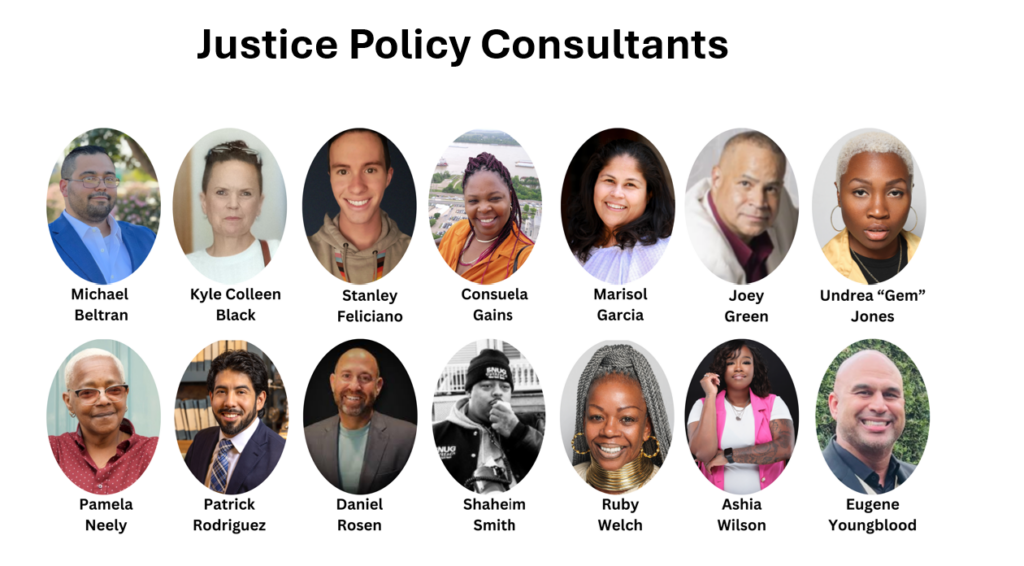Project
Transition from Prison to Community (TPC)

Overview
CEPP led the Transition from Prison to Community (TPC) initiative, a multiphase technical assistance effort supported by the National Institute of Corrections, for more than a decade. The goal of this landmark initiative was to support state-level efforts to ensure the successful and crime-free transition of people completing prison time and returning to the community. CEPP provided intensive technical assistance to 14 states over the course of the project.
Our Approach
TPC conceptualizes “reentry” as a process that begins upon admission to prison and that follows people through discharge and aftercare in the community. The model is based on nine components, including communication and collaboration among staff working with people as they move through the justice system; targeting interventions to address people’s assessed risks and needs; ensuring that returning citizens have basic survival resources, and developing the capacity to measure change.
CEPP provided three phases of support to 14 states (Georgia, Indiana, Iowa, Kentucky, Michigan, Minnesota, Missouri, New York, North Dakota, Oregon, Rhode Island, Tennessee, Texas, and Wyoming) as they created their own transition models that reflected the TPC components:
- In Phase 1, CEPP helped states form collaborative, multidisciplinary policy teams; develop a vision, mission, and goals for this work; gather information on returning citizens’ risks and needs and on current transition practices; and identify targets for change.
- In Phase 2, CEPP provided ongoing support to the teams’ implementation efforts. This included training staff on reentry-related topics, helping teams develop revised and integrated case management approaches, improving the sharing and coordination of information between justice system partners, and reviewing organizational changes implemented to improve reentry work.
- In Phase 3, CEPP helped the sites transition to independence from project-funded support. This included establishing interagency teams to better coordinate critical supports and services for people returning to the community, helping jurisdictions develop practical tools such as reentry checklists to continue best practices after the project ended, and assisting jurisdictions as they developed performance and outcome measures that would allow them to understand data and improve their reentry efforts in the future.
The Impact
With CEPP’s assistance, each state developed a transition framework that incorporated the components of the TPC model in a way that reflected their unique needs. While the 14 TPC sites implemented different programs, policies, and interventions, there were two common areas of focus and change:
- Creating a seamless system, from a person’s entry in the justice system to their return to the community. Sites put in place policies and practices to ensure a continuous exchange of information across agencies; increased availability of and coordinated institutional and community-based treatment programs, and enhanced collaboration between institutions and community providers. They adopted a Transition Accountability Plan—a single, dynamic case management plan that follows a person from the time they enter prison through aftercare in the community. They also institutionalized reentry-focused planning, workgroups, and boards to advance sound reintegration policies and practices.
- Customizing interventions at all points of the justice system to address individuals’ needs. In both prison and in the community, sites used assessment tools to assess risk and needs, and they linked people to necessary programming based on assessment results. They trained institutional and community-based staff and partners on evidence-based practices. And, they provided people with information about what to expect after release, assisted them with accessing available benefits and obtaining identification, and linked them to community supports.
These efforts led to higher levels of success for returning citizens and increased community well-being and safety.
Issue Area
Partners
Team
Related Resources
Related Projects
CEPP Justice Policy ...
CEPP seeks to ensure that currently and formerly incarcerated people have opportunities to apply their lived experience, collective skills, and intell...
A Case Study on the ...
The Center for Effective Public Policy (CEPP) convened a small group of criminal justice leaders to examine strategies for adopting evidence-based too...



